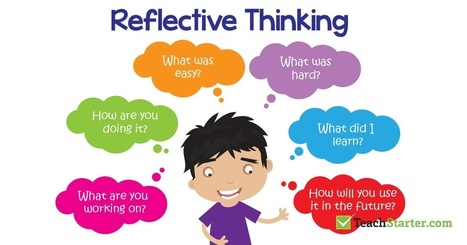 Your new post is loading...
 Your new post is loading...

|
Scooped by
John Evans
|
While the opening moments with students are crucial, so are the final minutes. Think about this for a second. What’s the point of an objective or learning target, whether stated, on the board, or students have the opportunity to later discover for themselves, if there is no opportunity at the end to determine if it was met or reflected upon? Closure matters, yet virtually every lesson I observe in schools across the country are missing the crucial component. Here’s why. Learning increases when lessons are concluded in a manner that helps students organize and remember the point of the lesson. Closure draws attention to the end of the lesson, helps students organize their learning, reinforces the significant aspects of the lesson, allows students to practice what is learned, and provides an opportunity for feedback, review, and reflective thinking.

|
Scooped by
John Evans
|
Educators—at all levels, including and maybe especially college—need to take a hard look at themselves and understand how they teach affects the results they are hoping to achieve. They need to know who they are teaching. They need to stop shaming their students and blaming them for not learning, especially when the way they are teaching students results in the lack of learning and understanding that they decry in their students.
On the second day of our fairly basic activity, the students were generating fascinating questions about the material they were reading online. I quickly recognized an opportunity and tapped into the enthusiasm that was bubbling into our science classroom. We had stumbled together onto the first step in what turned out to be one of my most successful and meaningful teaching experiences.
Via Tom D'Amico (@TDOttawa) , paul rayner
|

|
Scooped by
John Evans
|
Untangling education research can often feel overwhelming, which may be why many research-based practices take a long time to show up in real classrooms. It could also be one reason John Hattie’s work and book, Visible Learning, appeals to so many educators. Rather than focusing on one aspect of teaching, Hattie synthesizes education research done all over the world in a variety of settings into meta analyses, trying to understand what works in classrooms.
He has calculated the effect sizes of every teaching technique from outlining to project-based learning, which often tempts people to believe the strategies with low effect sizes don’t work and the ones with large effect sizes do. But Hattie — who is director of the Melbourne Educational Research Institute at the University of Melbourne — is the first to disavow this interpretation of his work. Instead, he and colleague Gregory Donoghue have developed a model of learning that proposes why different strategies may be effective at different stages of the learning cycle.

|
Scooped by
John Evans
|
When kids first learn how to write, they grapple with many different skills at once. After they master letters and build them into words, their next step is stringing those words together into complete ideas. That takes a lot of mental work, and trying to spell every word perfectly can slow the whole process way down. For this reason, many teachers in the early grades encourage inventive spelling, also known as temporary spelling — where the child makes his best guess on the spelling of the word, rather than stopping to find out the correct version.
|
 Your new post is loading...
Your new post is loading...
 Your new post is loading...
Your new post is loading...
















